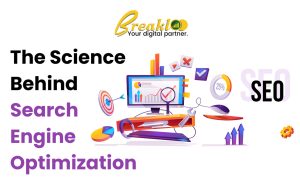Simplifying Your Business with ERP Systems
Think of your business as one massive, convoluted puzzle with dozens of tiny little jigsaws in the shape those generic nightmares tell you about — all working together to make this seamless image. But the puzzle works only if the pieces fall into place.
Luckily, automation has been introduced to shape this puzzle for businesses into a reality that is much simpler today. Enterprise resource planning (ERP) is the means by which we can institutionalize process automation in digital marketing and beyond, affording a comprehensive full-stack view into your operations.
Here’s what you need to know:
- What Is Enterprise Resource Planning?
- How Do ERP Systems Work?
- The Advantages of ERP Systems
- Top ERP Examples in the Market
- Tips and Best Practices for ERP Implementation
Whether you are a small or large business, ERP systems could bring considerable constancy and dependability to your daily processes. We will discuss each point and see how these systems operate, helping us to get major benefits.
What Is Enterprise Resource Planning?
At its core, ERP is a software package that integrates back-office operations like accounting, inventory management, and payroll. By connecting multiple processes into a single system, businesses can increase efficiency while reducing manual errors.
In one word: integration. ERP systems soil all areas of a business, making it so each arm is in the loop and works without any misinterpretation. It decreases manual entry, as well efficiency in the prevention of operational redundancies making it equivalent to time and money.
How Do ERP Systems Work?
But how does ERP integration even enable these collaborations?
In essence an ERP system is a database which stores data about operations and what activity happens where, so that users (staff) can draw on this information to execute business decisions. Examples include:
– Customer orders
– Inventory levels
– Financials
Accessible to any number of members in your organization, this information accessible across devices anywhere with an internet connection.
Most Common ERP Components
ERP system integration collates data from multiple sources into one singular database, typically organized into these divisions:
Supply Chain
Managing your supply chain is critical for a successful business. The supply chain component of ERP systems allows users to track suppliers, create purchase orders, track inventory levels, and manage delivery times.
Digital Marketing
Audiences are just one element that make up any business; campaigns and paid promotions are quintessential to all of them. Digital marketing: Integrated ERP systems, with a digital component that can work on visualising the marketing strategies along with creation of email campaigns and other push activities to drive sales.
Customer Relationship Management
Following digital marketing, this component allows businesses to manage customer relationships. It can track customer inquiries, provide customer support, generate leads, and create loyalty programs.
Project Management
ERP systems improve project and portfolio management, allowing users to track projects from start to finish. This includes budgeting, resource planning, and task management.
Business Intelligence and Analytics
For data analytics tools like Tableau or Power BI, ERP integration can help maximize these tools. This component provides access to real-time data and automated report creation.
Human Resources
Employees also benefit from effective ERP implementation. An ERP system can streamline employee onboarding, manage payroll and benefits, and track employee performance and attendance.
Financial Management
ERP systems streamline financial processes. They can manage accounts receivable and payable, generate balance sheets, income statements, and other financial reports, and ensure compliance with tax regulations and local accounting standards.
Four Benefits of an ERP System Integration
Why should you use an ERP system? Here are four advantages:
- Increased Efficiency on Multiple Fronts
ERP components manage the same data in different ways. Instead of managing separate databases, you input data once and use it across multiple platforms. This improves efficiency and reduces discrepancies and errors.
- Reduced Overhead Costs
Using multiple tools for different processes can be expensive. ERP integration consolidates data management under one tool, reducing redundant expenses and labor costs.
- Accurate Real-Time Insights
With better data understanding, companies can thrive. ERP systems provide real-time insights, essential for digital marketing, finance, operations, sales, and other departments.
- Better Customer Experiences
ERP systems enhance customer experiences by providing personalized insights for email marketing, targeted ad campaigns, customer segmentation, and more.
Top ERP Examples in the Market
Zoho Creator
Ideal for those starting their ERP journey, Zoho Creator is a fully customizable low-code solution with pre-built systems for sales, marketing, operations, human resources, finance, IT, and customer support. It also boasts over 600 third-party integrations.
Microsoft Dynamics 365
Perfect for those within the Microsoft ecosystem, Dynamics 365 integrates with Microsoft Cloud, Power Platform, and Microsoft 365. With the AI-powered Co-Pilot, expect a more advanced experience.
Oracle NetSuite
NetSuite has been designed as a cloud native application and is engineered to work better with Oracle’s other products because it was built for the same foundation. This also spans across key business areas like accounting, inventory, supply chain management, procurement and warehouse fulfilment.
Tips for Implementing ERP Systems
Tip 1: Understand Your Business Requirements
Create a journey of exactly how you want to take your business and figure out what do you need. Identifying and functionally performing the next thing you need to improve a challenging area so that flow of value can reach your long-term goals.
Tip 2: Customize Your ERP System Integration
Your needs — The ERP systems should be configurable. Personalize it as per your investment objectives and avoid adopting a non-working system for the work you do.
Tip 3: Train and Support Your Team
The next will provide comprehensive training for employees and ongoing support from resources, technical assistance to regular system maintenance. Designate cross-department teams for report creation output and system usage documentation, as well employee training.
Build Your Own Enterprise Resource Planning System
With an ERP system, you streamline your business processes by centralizing functions for improved management and transparency. Find the right ERP system for your business now!
Get specialists in designing custom ERPs: Breakloo Digitals. Imagine our team working within the confines of a built-to-suit (BTS) environment that focuses on achieving maximum success for your digital marketing requirements.
Simplify your processes and automate with Breakloo Digitals. Click here to get started.



